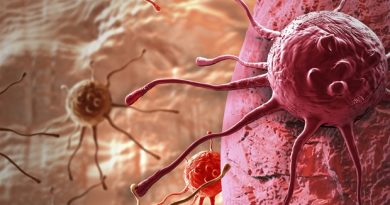Humid, Salty Air Could Help Suppress SARS-CoV-2: Studies
Editor’s note: Find the latest COVID-19 news and guidance in Medscape’s Coronavirus Resource Center.
Breathing water and salt reduces generation of respiratory droplets, and potentially reduces COVID-19 incidence and symptoms, new research suggests.
Two parallel studies were conducted by researchers at Columbia University; the Harvard John A. Paulson School of Engineering and Applied Sciences; Massachusetts General Hospital; and the National Institutes of Health (NIH). Rachel D. Field, doctoral candidate with the School of Engineering & Applied Sciences at Columbia University in New York City, is first author of the research, which was recently published in the Molecular Frontiers Journal.
One study used a randomized four-arm design with 21 healthy participants who experienced different levels of humidity and salinity. In that study, the researchers found that when participants breathed in humid air and salt, droplets were deposited in the nose, trachea, and main bronchi.
The number of respiratory droplets — known to be a primary transporter of SARS-CoV-2 — was cut by 50% (P = .05) within 10 minutes after the hydration intervention.

Dr David Edwards
Coauthor David Edwards, PhD, an associate professor at the Harvard John A. Paulson School of Engineering and Applied Sciences in Boston, Massachusetts, told Medscape Medical News: “What we found in the study is if I have a group of people who move from a dry, air-conditioned environment with 10% humidity into a moist room and they spend 10 minutes in that moist room, their exhaled aerosol — the number of droplets generated by the lungs — falls by about 50%. If they go back into the dry room an hour later, they are breathing out the same number [of droplets] they were breathing before.”
The study also found that when participants were exposed to divalent calcium and magnesium salts suppression continued much longer — for 4 to 5 hours.
The second study was a preliminary ecologic regression study of COVID-19 cases in the United States between January 2020 and March 2021.
In that study, the authors found a correlation between exposure to higher airborne salt concentration in locations along the US Gulf and Pacific coasts with strong inland winds and suppression of COVID-19 incidence and deaths per capita relative to inland counties by about 25% to 30%.
The research was partially funded by Sensory Cloud, a Boston-based technology startup that designs solutions to healthcare problems through discoveries in olfaction and respiratory biology. Edwards is the founder of the company.
Masks Help Hydrate Airways
Edwards said the research helps point out the little-discussed humidifying benefit of masks. Keeping the airways hydrated when masks return the moisture is likely part of their COVID-protective qualities, Edwards said.
“That should be reassuring that there’s this other effect that’s protecting us,” he said.
In comparing coastal and inland counties for COVID incidence and mortality rates to gauge salt’s effect, the team addressed many potential confounders, Edwards said, including age; voting patterns and associated behaviors; body mass index; population density; air pollution levels; income levels; and social-distancing practices.
Vaccinations became available in the last 3 months of the 15-month study, but had no bearing on the results, as the number of those vaccinated was small at that point and most vaccinated people had only one dose.

Dr Monica Mazurek
Monica Mazurek, PhD, an associate professor in the Department of Civil and Environmental Engineering at Rutgers University in New Jersey, who was not affiliated with the studies, told Medscape Medical News: “The authors pose an interesting hypothesis regarding respiratory health.”
She said they “demonstrated a plausible relationship between breathing humidified, salty air and the reduction of droplets in the upper airways. This could be a possible new treatment and preventative approach for reducing the spread of respiratory infectious agents.”
However, she said the sample size “is too small to make stronger inferences or conclusions. More research and experimentation are needed to make more convincing progress on this interesting problem.”
What the Findings Mean for Public Health
The research has several implications for public health, Edwards said.
The results support the use of airway hygiene, similar to the need for handwashing, he said. The company he founded has developed an airway hygiene micro-mist consisting of salt, water, and calcium called FEND, used in some schools and hospitals in the United States and India.
Over-the-counter nasal saline rinses are also a good start, Edwards said, and are effective at cleaning mucus. He recommends cleansing several times a day.
These saline rinses target the nose, he said, while FEND delivers salts, particularly salts with a high calcium concentration, to the nose, trachea, and main bronchi to promote a longer hydration effect.
Other ways of cleaning the airways for those who don’t live in coastal climates with high salt content in the air, start with being in an environment with 40%-60% humidity, Edwards said.
“In any environment in which I’m at risk of breathing airborne allergens, pathogens, or carcinogens, it’s an added protection of my respiratory health,” he said.
He added that “all things being equal, dry, air-conditioned environments are a risk factor for respiratory disease and they are exposing us to very dry air that’s weakening our immune system.”
Edwards is the founder, a board member, and a shareholder of Sensory Cloud. A coauthor is a board member and a shareholder of Sensory Cloud, and another is an employee of Sensory Cloud. The study was supported by Sensory Cloud, the NIH, the National Institute of Diabetes and Digestive and Kidney Diseases, the Harvard University Climate Change Solutions Fund, and the 2020 Star Friedman Challenge for Promising Scientific Research. The funders had no role in study design, data collection, data analysis, data interpretation, writing of the article, or the decision to publish the study. Participation of NIH in the funding is not an endorsement of any product or service by Sensory Cloud.
Molecular Frontiers Journal. 2021;5:1-13. Full text
Marcia Frellick is a freelance journalist based in Chicago. She has previously written for the Chicago Tribune, Science News, and Nurse.com, and was an editor at the Chicago Sun-Times, the Cincinnati Enquirer, and the St. Cloud (Minnesota) Times. Follow her on Twitter at @mfrellick
Follow Medscape on Facebook, Twitter, Instagram, and YouTube.
Source: Read Full Article



